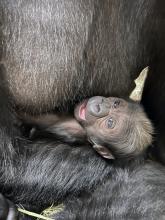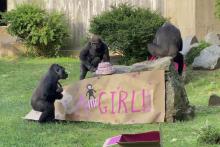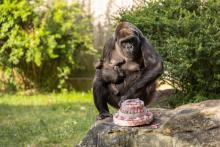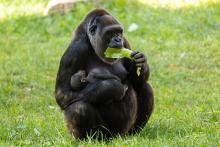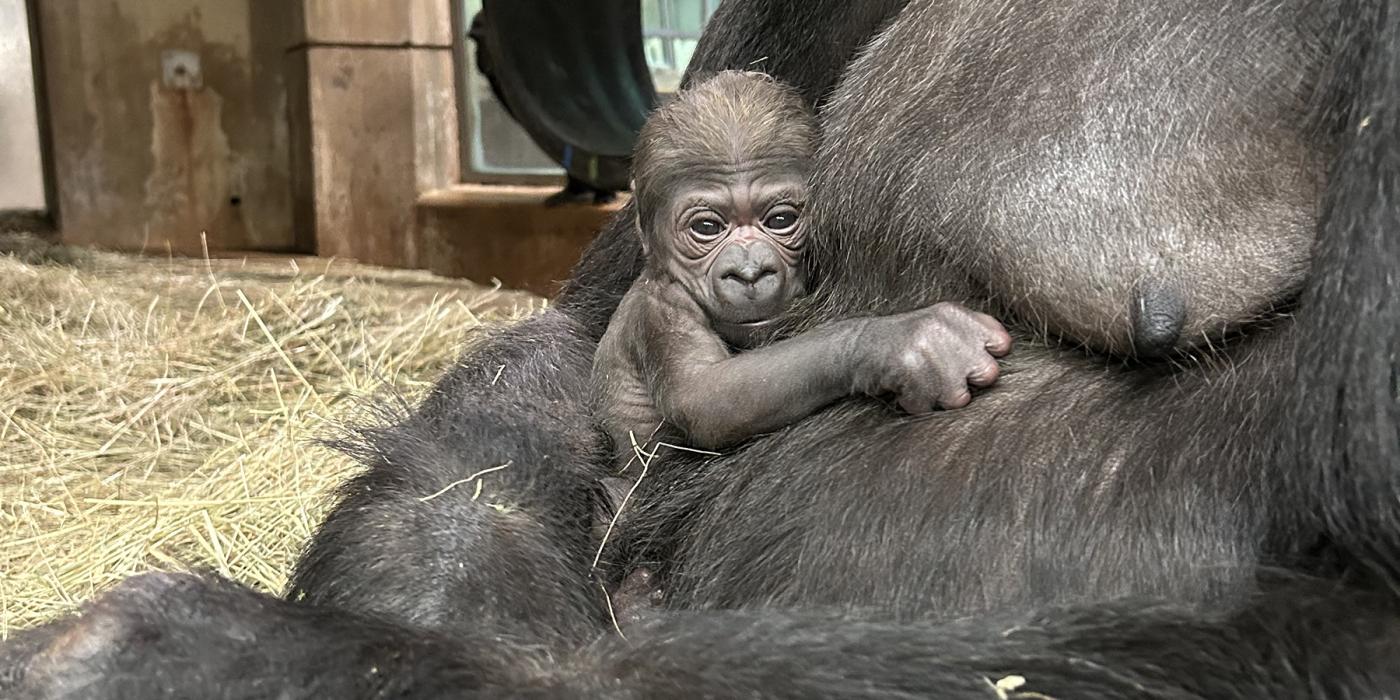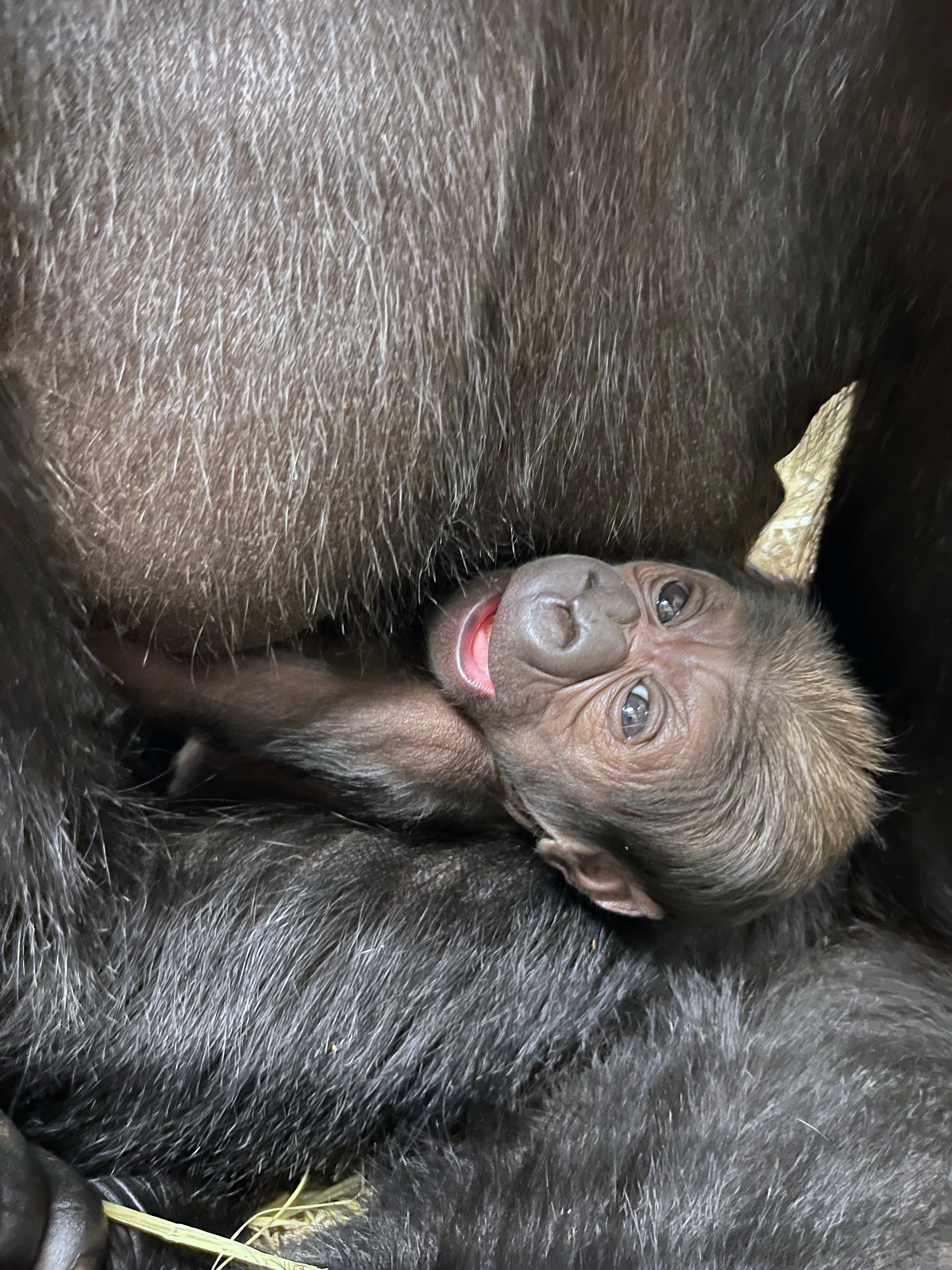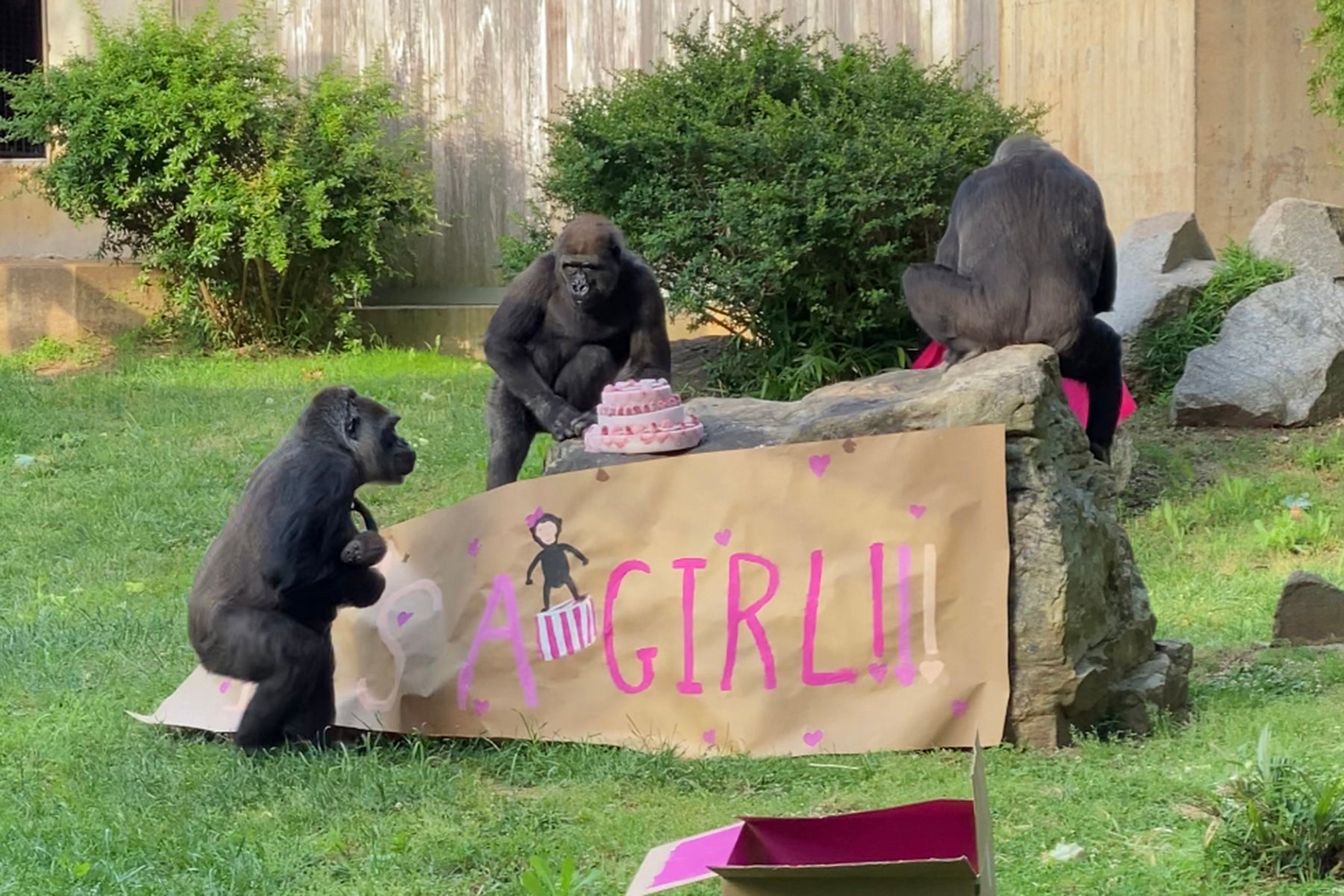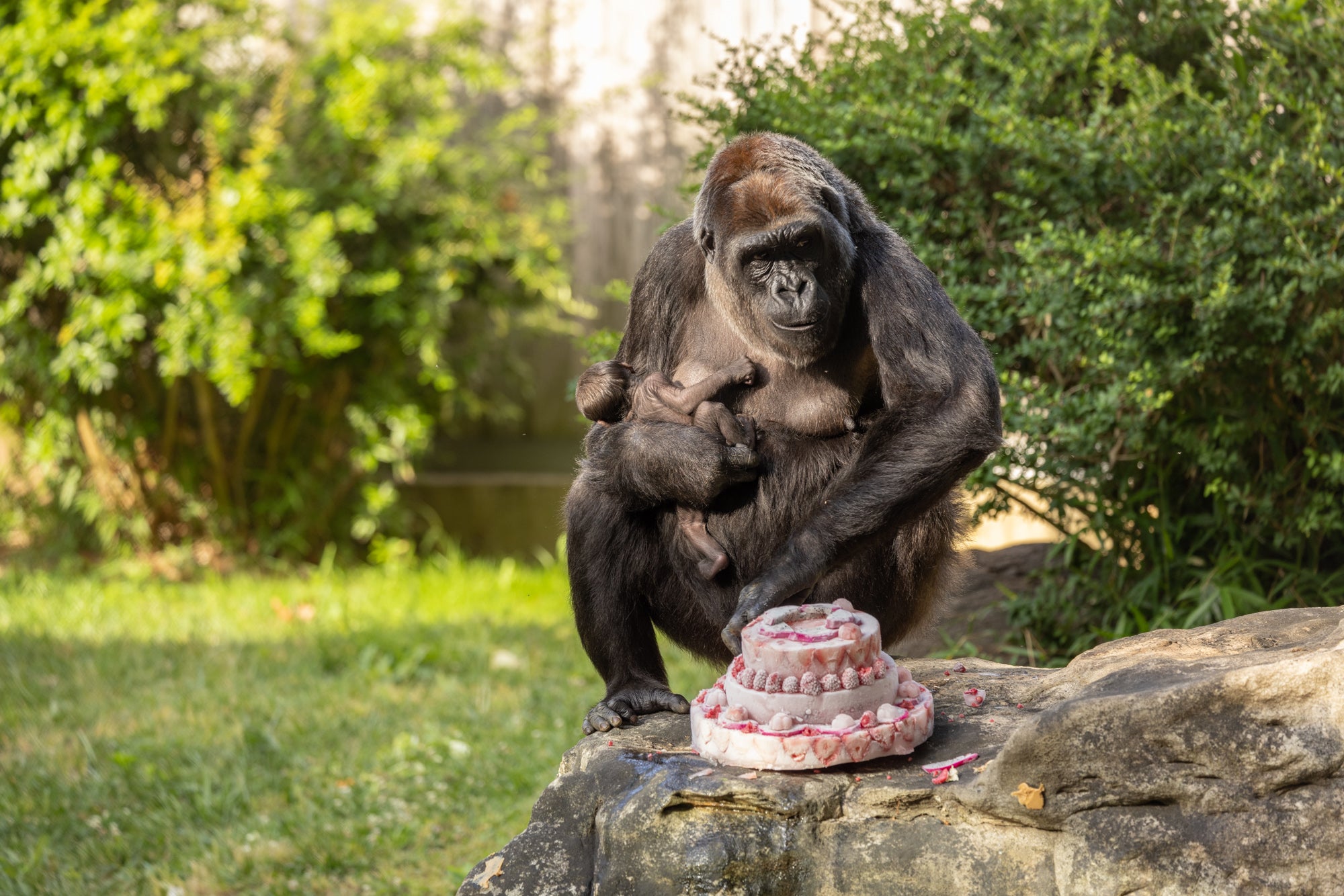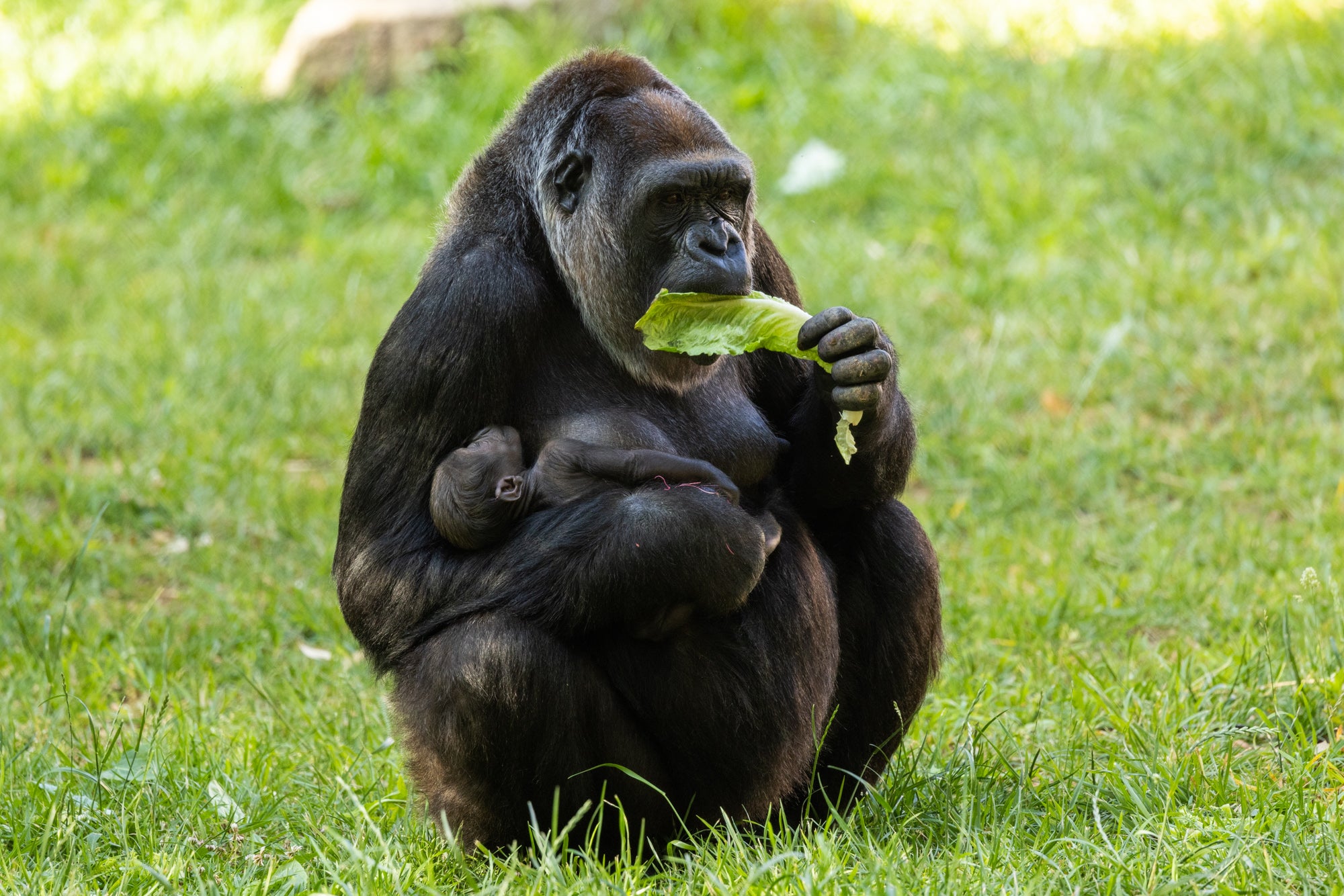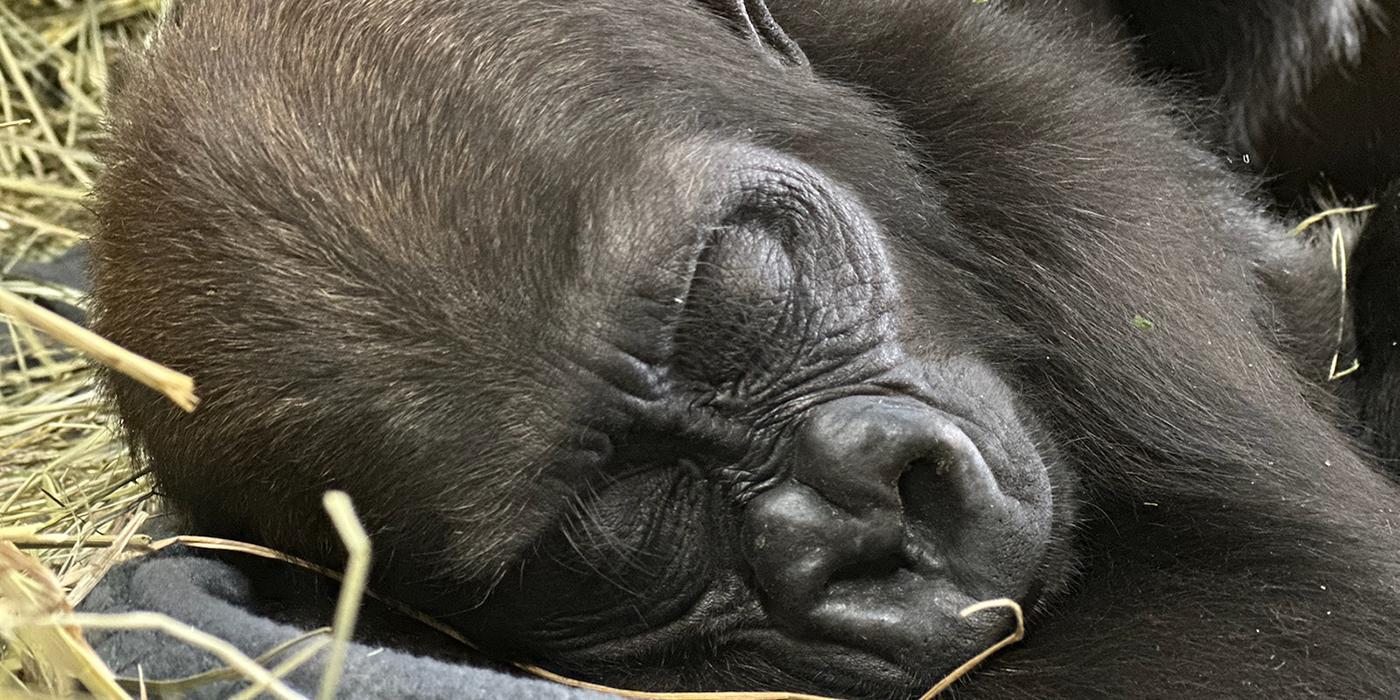The Public Can Help Name a Baby Western Lowland Gorilla at the Smithsonian’s National Zoo and Conservation Biology Institute
Starting today, June 5, western lowland gorilla fans will have an opportunity to vote on a name for a baby gorilla born May 27 at the Smithsonian’s National Zoo and Conservation Biology Institute (NZCBI). Every western lowland gorilla birth is cause for celebration as this species is considered critically endangered by the International Union of Conservation of Nature. This morning, primate keepers threw a party for the gorilla troop, and festive enrichment revealed that the newborn is female. Voters can select their favorite names today through noon Friday, June 9, on the Zoo’s website. The winning name will be announced June 9.
The three possible name choices were selected by the primate keepers. The name that receives the most votes will be bestowed on the baby. The choices are:
- Lola [LOH-la]: Yoruba for “greatness”
- Mkali [M-KAH-lee]: Swahili for “fierce”
- Zahra [ZAH-rah]: Swahili for “beautiful flower”
This baby is the second offspring for both 20-year-old mother Calaya and 31-year-old father Baraka. Animal care staff have observed Calaya nursing the baby, who has been clinging closely to her mother. The newborn appears to be healthy and strong, and staff are cautiously optimistic that she will thrive. Virtual visitors can follow #GorillaStory updates on NZCBI’s Facebook, Twitter and Instagram to stay up-to-date on the baby’s milestones.
Gorillas live in groups, called troops, that are typically composed of a silverback male, one or more blackback males, several adult females and their infant and juvenile offspring. In addition to this baby, Calaya and Baraka, other members of the troop include the newborn’s brother, 5-year-old Moke, as well as a 41-year-old female named Mandara and her 14-year-old daughter, Kibibi. Great Ape House visitors can see the Zoo’s troop and meet an animal keeper to learn about the fascinating world of gorillas at 11:30 a.m. daily.
Native to Africa, western lowland gorillas live in the forests of Gabon, Central Africa Republic, Cameroon, Angola, Equatorial Guinea and Congo. The International Union for Conservation of Nature lists the western lowland gorilla as critically endangered due to habitat loss, disease and poaching. Scientists estimate that in the past 20 to 25 years, the number of wild western lowland gorillas has decreased by 60%.
The public can help protect western lowland gorillas’ natural habitat by making environmentally conscious decisions like recycling. One of the metals inside electronic devices, tantalum, is mined from areas in the Democratic Republic of the Congo where gorillas live. Tantalum is extracted from the ore Columbite-tantalite (commonly known as coltan). Coltan excavation has resulted in gorilla habitat destruction, and many of the apes fall victim to poachers because of this practice. Recycling electronics that contain tantalum—including cell phones, computers, tablets, cameras, gaming consoles, hearing aids and GPS navigation systems—can help protect gorilla habitat by greatly reducing the demand for more expansive coltan mining.
# # #Related Species:
Image Gallery
